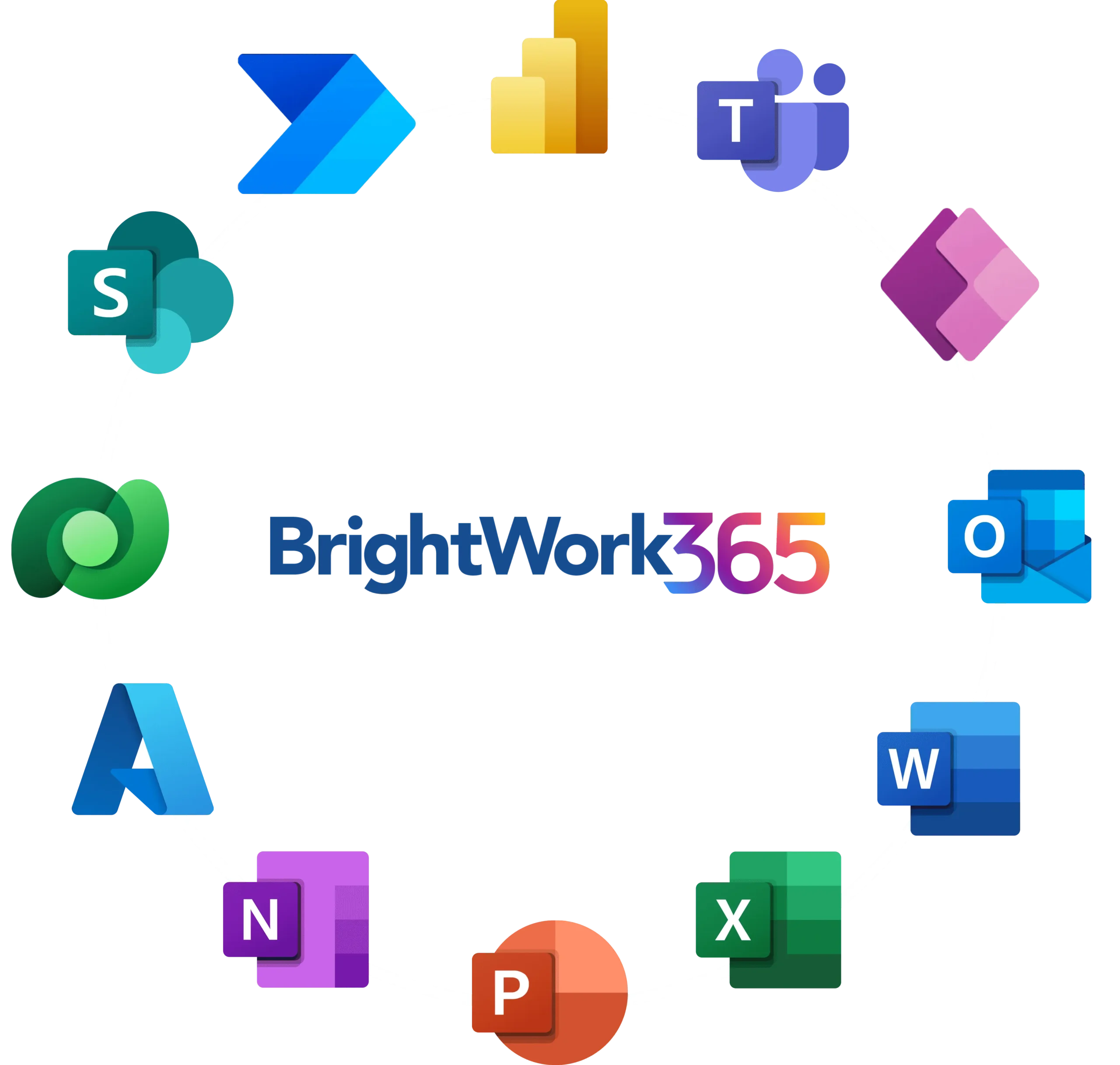What is a Project Plan?
A project plan is a critical element in project management. It provides a formal and approved framework to guide the execution and oversight of a project.
This detailed blueprint maps out the project’s goals, scope, expected deliverables, timelines, resources, and governance practices, serving as a roadmap for project managers and stakeholders to achieve project success.
Why Project Plans Are Important
The project plan is essential for coordinating team efforts and ensuring everyone is aligned with the objectives. It’s also instrumental in managing risks, keeping costs in check, and tracking progress.
Recognized for its fluidity, the project plan is continuously updated and refined throughout its lifecycle to reflect new insights and changes.
Manage Projects with Microsoft 365, Power Platform, and Teams
Collaborate seamlessly from anywhere, with BrightWork 365 and Microsoft Teams

What are the 8 Main Components of a Project Plan?
The eight main components of a project plan are integral to steering a project toward its objectives, offering a structured approach to its management and execution. Regardless of size or scope, these elements form the backbone of any successful project.
1. Project Objectives
The project objectives section of a project plan outlines the specific goals that the project aims to achieve. These objectives should be SMART – Specific, Measurable, Achievable, Relevant, and Time-bound. Clearly defined objectives provide a clear direction for the project and help ensure that all team members work towards the same goals.
The project objectives should align with the organization’s overall strategic goals. They should also be communicated to all project stakeholders to ensure everyone understands the project aims.
2. Project Scope
The project scope is a detailed description of the work needed to deliver the project. It includes the project’s deliverables, features, functions, tasks, deadlines, and costs. The project scope helps define the project’s boundaries. It clearly explains what is included and not included in the project.
Defining the project scope is a critical step in the project planning process. It helps to prevent scope creep, which occurs when the project’s scope expands beyond its original objectives. Scope creep can lead to delays, cost overruns, and other project management challenges.
3. Project Schedule
The project schedule is a timeline that outlines when the various tasks and activities of the project will be completed. It includes start and end dates for each task, milestones, and deadlines. The project schedule helps to ensure that the project stays on track and is completed on time.
Creating a project schedule involves:
- Identifying the tasks that need to be completed.
- Estimating the time required for each task.
- Sequencing the functions in the correct order.
The project schedule should be realistic and achievable, considering the resources available and the complexity of the functions.
4. Resource Plan
The resource plan is a detailed list of all the resources needed to complete the project. This includes human resources (the project team), materials, equipment, and financial resources. The resource plan helps ensure that all necessary resources are available when needed and that the project stays within budget.
- Creating a resource plan involves
- Identifying the resources that will be needed.
- Estimating the quantity and cost of each resource.
- Planning for the acquisition and allocation of the resources.
The resource plan should be regularly updated to reflect changes in the project’s resource requirements.
5. Risk Management Plan
The risk management plan identifies potential risks that could impact the project and outlines strategies for managing these risks. This includes identifying potential hazards, assessing their impact and likelihood, and developing mitigating or managing strategies. The plan helps ensure that the project team is prepared to deal with any risks that may arise during the project.
Creating a risk management plan involves thoroughly analyzing the project and its environment to identify potential risks. Once the risks have been identified, they should be assessed regarding their potential impact and likelihood. Based on this assessment, strategies can be developed to mitigate or manage the risks.
6. Communication Plan
The communication plan outlines how information will be communicated to the project team and other stakeholders. This includes the methods of communication, the frequency of communication, and the individuals responsible for communication. The communication plan helps to ensure that everyone involved in the project is kept informed and that communication is effective and efficient.
Creating a communication plan involves identifying the information that needs to be communicated, the individuals who need to receive it, and the best communication methods. The plan should be regularly reviewed and updated to remain effective as the project progresses.
7. Quality Management Plan
The quality management plan outlines the quality standards that the project will adhere to and the processes that will be used to ensure these standards are met. This includes quality assurance, quality control, and quality improvement processes. The quality management plan helps ensure that the project deliverables meet the required quality standards.
- Creating a quality management plan involves:
- Identifying the quality standards that apply to the project.
- Developing processes to ensure these standards are met.
- Planning for continuous quality improvement.
The plan should be regularly reviewed and updated to remain effective as the project progresses.
8. Project Closure Plan
The project closure plan outlines the steps to close the project once completed. This includes the processes for handing over the project deliverables, documenting lessons learned, and releasing project resources. The plan helps to ensure that the project is closed in a controlled and orderly manner.
Creating a project closure plan involves planning for the completion of the project, including the handover of deliverables, the documentation of lessons learned, and the release of resources. The plan should be created at the beginning of the project and regularly reviewed and updated as the project progresses.
A Guiding Foundation
In conclusion, a project plan is a comprehensive document that guides the execution and control of a project. It includes several key components, including the project objectives, scope, schedule, resource plan, risk management plan, communication plan, quality management plan, and project closure plan. Each component plays a vital role in guiding the project to successful completion.
The project plan is a living document that is continually updated and refined as the project progresses and new information becomes available. It is an essential tool in project management, helping to align the team’s efforts, manage risks, control costs, and measure progress.
Manage Projects with Microsoft 365, Power Platform, and Teams
Collaborate seamlessly from anywhere, with BrightWork 365 and Microsoft Teams.
